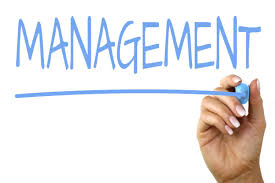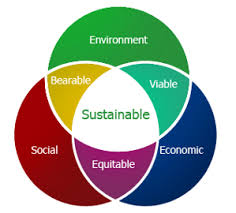
International Media
Order Instructions:
To assess the students understanding of key concepts and their ability to apply critical analysis and writing skills to the development of a coherent theoretical argument. Choose one (1) of the following essay topics and write a 2500 word essay:
1. An analysis of the evolution of international communication ‘reveals a dominance and dependency syndrome – the domination of a few countries by virtue of their control of both the software and hardware of global communication and the dependence of many nations upon them’ (Thussu 2000:6). Does this statement confirm the Marxist dictum that whoever controls the means of production controls the ideas that circulate, in this case, internationally?
2. Are local cultures becoming homogenised by international media? Evaluate the evidence used to support claims of homogenisation. Discuss alternative views of the future impact of international media on culture (eg. contraflow, hybridisation, diversification, fragmentation, multiplicity, etc) using examples as evidence.
3. Many advances in communication technologies have greatly enhanced international communication. This not only occurs at the government to government level but has also enhanced business to business and people to people interactions at a global level unimaginable a century ago. As the 21st Century develops the communication networks that helped represent the world to itself, and let it be observed as a single blue planet, have also created a medium for revolutionaries and terrorists to go about their covert and explosive business – a business that lives and breathes through digital communication technology use, such as social media and the mobile phone networks, and the oxygen of media exposure, be it through Al Jazeera, CNN or the BBC. Discuss.
4. Some have argued that the new global communication infrastructure has the potential to deliver digital democracy which would privilege public good and creativity while others argue that commodified information and communication, colonized by a few multimedia mega-corporations and their localized clones, is what is actually occurring. Which of these positions is true?
The essay is to be uploaded through Turnitin and will be marked electronically. You are not required to submit a cover sheet.
If you want feedback on your essay, you must also include (immediately before the essay) a fully completed Essay Self-Evaluation/Feedback Sheet (available on Blackboard).
The assessment will be based on content, structure, style and format. Particular emphasis will be placed on:
a) the extent and quality of research evident in the essay
b) the identification of key issues
c) the originality, depth and quality of thought in analysing the topic
d) the quality of expression, argument and presentation in the essay
Please note that your reference list for this essay must contain, at the bare minimum, at least eight (8) monographs (i.e. books) and at least four (4) journal articles.
Course learning objectives of this assessment (1, 3, 4)
1. Examine the historic, geographic, economic and political context of international media.
2. Compare the role and function of the media in Australia with those in various other nations.
3. Examine the socio-cultural influence of international media.
4. Explore practical implications of international media in relation to new technology and global issues.
Essays or written assessments meet the course objectives of knowledge acquisition and demonstrated assimilation of data, upon reflection and analysis, to produce articulate and concise documents, which convey evidence-based understanding of the concepts and topics.
SAMPLE ANSWER
International Media
The advancement of technology which has seen the development and advancement of communication media has created great effects to the world. Technology has globalized the world with the creation of media platforms where information can be shared instantly and reach a very wide and varied audience. The use of the internet has globalized the world and enhanced communication among governments and businesses all over the world. Effective and enhanced media and communication has served the business world very diligently and companies all over the world value the power of the internet since it has enabled them communicate effectively to their clients and business partners all over the world. The 21st Century brought about the dot-com era in technology which impacted very positively to the way the world communicates. Organizations have been able to revolutionize communication since then and have benefited since they can be able to communicate more effectively and efficiently both internally and externally (Karacasulu, 2006).
Technology advancement has also changed the way the government communicates to the world and also to its people. Digital communication technology which includes the use of platforms such as social media has enabled governments to improve show services are offered to its citizens. Most of government agencies currently use media platforms to offer information about their operation and services to their target groups of the society. Most of the services including those offered by the immigration departments, revenue collection authorities and media licensing boards are now available online which is very different from how services where offered before the 21st century (Bilgen, 2012). Organizations too have not been left behind in the integration of technology in their activities. Most international companies currently carry out most of their operations ranging from board meetings, recruitments, internal communications and marketing of their products over internet-enabled digital platforms. This has been of great positive impact to the organizations and enabled them to reach a wide range of clients all over the world and save the organizations millions through enhanced and effective communication (Korstanje, 2013).
The advancement of communication and media all over the world has seen the world become a globalized place and information can now be passed from one point or individual to a wide range of recipients within a very short time. Media platforms such social media platforms including Facebook, Twitter, and Instagram among others have developed from the effects of technology advancement and have taken the world by storm (Hess & Kalb, 2008). These social media platforms are able to attract a very wide range of audience which makes them very important to the world of communication and international integration. Mobile networks have also evolved which have made telephone conversations very easy across boundaries all over the world. Mobile communication is currently seamless and different providers have made it possible the integration of their users and enhanced communication between the users a very easy and cheap task to accomplish. Media houses and television stations have not been left behind the internet revolution and they have also offered their news over these social media platforms and over other internet platforms which ensures that the information reaches people all over the world.
In the 21st century international media has seen great developments and the establishment of platforms which have changed how the world communicates. Media platforms such as the mobile networks, social media and international televisions have made information available to all parts of the world. This has impacted intergovernmental relations and communication since information can be easily posted and reaches a wider range of readers. Apart from benefiting international organizations and also small businesses and government agencies, the advancement of technology has also attracted revolutionary groups and terrorist groups that have been using these platforms to advance their activities. It is worth noting that there appears to be a symbiotic relationship between the media and the terrorist groups. The media world are interested in getting information for their readers and viewers all over the world about terrorism and at the same time the terrorists are interested in attracting the greatest attention from the world (Hess & Kalb, 2008).
Terrorism has turned out to be an explosive business that lives and breathes through digital communication technology including social media and mobile phone networks that are now available seamlessly all over the world. Terrorist groups all over the world are more interested in the media coverage and exposure through international media channels including CNN, BBC and Al Jazeera. This situation creates what many researchers have come up to point out as a symbiotic relationship between the international media and terrorism groups and their proponents (Lewis, 2010). The past two decades have seen the rise of terrorism and springing up of many revolutionary and terrorist groups all over the world. Be it in America, Australia, Europe, Middle East, Africa, every part of the world has witnessed a rise in terrorist attacks and these groups have taken the media for their hostage and promotion. From the details of recent terrorist attacks it can be noted that the architects of the attacks are interested in using the media for their own benefits in their operational efficiency, gather information on potential areas, carry out recruitment and carry out fundraising for their missions. The terrorist groups are using the media to develop their networks through creating propagandas and the increased coverage benefits them in their recruitment exercises and glorification of their actions (Baran, 2008).
The architects of terrorism have targeted the media to benefit them in their drive through the attention they gain, recognition all over the world or by a wider range of viewers and readers of information over the available media platforms. The terrorism groups feel that they gain respect in the world and sell their ideologies in the world thus at the same time gaining a wider range of supporters and members. It has been argued that through the coverage of the terrorists’ attacks, the media benefits too. Through the coverage the events of the terrorists’ attacks, the media is able to draw the attention of the world viewers and therefore benefits from information sales and huge follower audiences thus creating profits that are important for their running. In the event of a terrorist attack for instance the 9/11 attack in New York in 2001 and the Sydney attack of 2015, the eagerness of the public to get the information about the attacks drive the media to cover the events which also benefits the terrorists (Altheide, 2009). Researchers have for the last decade carried out studies to understand the symbiotic relationship between the media and terrorism and how the advancement of the world’s media platforms has benefited the uprising of terrorism groups in the world.
The socio-economic impact of international media advancement is notable in all sectors of the world business and all government agencies. The media has been seen to have been taken hostage by the terrorism groups that have emerged in the different parts of the world. Terrorism has grown steadily at the same rate which social media platforms and other media platforms have developed. This is due to the fact that these groups are organized in social media and these platforms are used to entice their backers to join them and organize attacks to their targets. It has been argued in many circles of the world business that, if the media coverage was not available in the points of terrorist attacks, the attacks would not have such impacts since the impact would only be confined to the victims of such attacks (Altheide, 2009). This is to say that the main goal of the terrorists is to ensure that they attract as much attention as possible as they are not only interested in the victims of the attacks but also the attention of world media and international governments. This is the reason why the attackers plan carefully the points to attack, carry put detailed researches about their potential victims and weigh on the attention that carrying out the attacks will draw (Papacharissi & Oliveira., 2008).
The international media has made terrorist groups’ leaders look like world leaders who ought to be listened to due to the advanced coverage of their actions including recruitment activities and trainings together with the coverage of the attacks. Terrorist groups use the media platforms such as the social media and television media to ensure that they publicize their political causes and ideologies and reach their proponents and opponents and gain mileage and support from the world’s governments to drive forward their agendas. Terrorist groups are currently organized and seem to have their ideologies and political views and in most cases seem to be fighting against established governments. They have used the media to create a link between their operations and those of the entities and governments that they fight against and create confusion of which side is doing the right thing to the public. Based on these advancements and publication of their actions and ideologies to the world media terrorists are able to carry out their attacks since they know that they will draw the attention of the government existent in the area of attack and draw more attention to the world media (ADL, 2014).
Social media is currently playing a very vital role to advance the activities of the terrorist groups all over the world. Social media and development of mobile networks has made it possible for terrorists to share their messages to a very large audience. They are able to communicate to the world via their websites where they post their activities and drive their operations. This way and with the use of the internet, the terrorists can have the messages they need to bring forth to the world audience and post them online and have a global reach. Terrorists are currently using the social media to pass out information about their activities and be able to attract interested individuals all over the world to join them. With the use of the social media, terrorists are able to have a worldwide reach and attention and sell out their ideologies and agendas to the world audience at very little expense. Internet advancement and the technological development have provided a perfect tool for the terrorists to use to advance their goals and reach a wider section of world’s audience (Wohlforth, 2010).
In the event of advanced technology and media platforms such as the social media terrorism has evolved and the groups are targeting people to join them from all over the world. For instance the Islamic State terrorist group currently operating in the Iraq and Syrian crisis has been using the social media to expand its influence and carry out recruitments for members from different nationalities all over the world (ADL, 2014). The Islamic State is building on technological platforms that were previously used by Al Qaeda in Iraq and Al Shabaab in Middle East and North East Africa. These terrorist groups have in past used social media platforms to drive their operations and carry out recruitments in their areas. The IS has been using media platforms to recruit western followers to the group and has also been targeting its western supporters to take part in the recruitment. IS’s propaganda on the media platforms has made the terrorist group be able to attract as many as 15,000 foreigners who are fighting in its support in the Syrian crisis. The propagandas of the terrorist group have been able to draw so much attention due to the integration of social media platforms in their activities. The group posts online propaganda videos featuring Westerners such as two Americans featured in 2013 and 2014 who have helped it gain worldwide attention.
The rate at which terrorists have been using the media platforms without fear has raised eyebrows all over the world. The sophisticated use of social media by these groups to drive their goals and reach a wider audience has been a concern with the current advancement in technology (Purpura, 2008). The terrorist groups are currently maintaining accounts in social media platforms such as Facebook and Twitter where they disseminate their messages. In the earlier versions of media advancements, terrorist groups relied on extremist forums where information was passed to world through videos and magazines available on their websites and other media placements. This was a slower process according to the audience that could reach the information posted which has been enhanced by the current social media platforms where the terrorist groups are able to share their propaganda swiftly to the world audience and allow supporters to take part their processes. The Islamic State terrorist group has also been able to use social media to launch campaigns against the western countries and United States and also released videos beheading American citizens to try and gain more attention to the world’s super powers and governments (Abrahms, 2010).
Media coverage on terrorism has become one of the booming businesses for the media industry. This is due to the fact that terrorism reports attract a wider audience and bring in profits to the media organizations due to the higher rating of viewing. Some aspects of terrorism such as the fighting involved, shocking stories and experiences, and the heroes that are made in such attacks make the coverage of terrorism very captivating to the media organizations. With the increased coverage of terrorism in the world currently, the aspect of giving the right information and truthful information to the world has become very critical. This is due to the fact that due to the audience that is drawn by terrorism all over the world, social media and other platforms are used to pass false information to the world (Howie, 2012).
The concern of the media currently is how to cover terrorism and the information that gets to the public audience. Since the terrorist groups have made use of the social media and media stations to drive their agendas, it is important for the media to understand its role in the world. This is to say, despite the pull and thrill to report the terrorists attacks and activities of the terrorists, the media should understand that this information helps sell the terrorists groups and gain greater audience (Pastor, 2009). Media coverage of terrorists’ activities has faced biased reporting whereby factions of terrorist groups and rebels are now reporting based on their beliefs and ideologies. This has also happened to the reporters in areas of crises such as in Iraq and Syria who are affiliated to one of the factions fighting thereby reporting in support of the groups they support. This is done in that manner to gain the attention of the world without the knowledge that in most cases worsens the situation since the information given to the world does not depict the true situation. Social media platforms should also be monitored to ensure that the terrorist groups do not use them to drive their activities of causing fear and terror to the world and in their praising of their activities that helps in their recruitment activities and gaining support all over the world. International media has evolved greatly and it drives many activities in the world and the use of media by terrorist movements shows that media should be well governed (Korstanje, 2013).
References
Abrahms, M. (2010). What Terrorists Really Want: Terrorist Motives and Counterterrorism Strategy. Cambridge, MA: MIT Press.
ADL. ( 2014, August 21). Hashtag Terror: How ISIS Manipulates Social Media . Retrieved May 14, 2015, from Anti-Defamation League: http://www.adl.org/combating-hate/international-extremism-terrorism/c/isis-islamic-state-social-media.html
Altheide, D. (2009). Terror Post 9/11 and the Media. New York: Peter Lang.
Baran, J. (2008). Terrorism and the Mass Media after Al Qaeda: A Change of Course? The Peace and Conflict Review 3, 1-5.
Bilgen, A. (2012, July 22). Terrorism and the Media: A Dangerous Symbiosis. Retrieved May 14, 2015, from E-International Relations: http://www.e-ir.info/2012/07/22/terrorism-and-the-media-a-dangerous-symbiosis/
Hess, S., & Kalb, M. (2008). The Media and the War on Terrorism. Washington, DC: Brookings.
Howie, L. (2012). Witnesses to Terror: Understanding the Meanings and Consequences of Terrorism. Hampshire: Palgrave Macmillan.
Karacasulu, N. (2006). Security and Globalization in the Context of International Terrorism. Review of International Law and Politcs , 1-17.
Korstanje, M. (2013). Preemption and Terrorism. When the Future Governs. Cultura, 167-184.
Lewis, J. (2010). Language Wars: The Role of Media and Culture in Global Terror and Political Violence. London: Pluto Press.
Papacharissi, Z., & Oliveira., M. d. (2008). News Frames Terrorism: A Comparative Analysis of Frames Employed in Terrorism Coverage in U.S. and U.K. Newspapers. The International Journal of Press/Politics 13., 7-12.
Pastor, J. (2009). Terrorism & Public Safety Policing: Implications of the Obama Presidency. New York, NY : Taylor & Francis.
Purpura, P. P. (2008). Terrorism and homeland security: an introduction with applications. London: Butterworth-Heinemann.
Wohlforth, C. (2010). Realism and Security Studies. New York: Routledge.
We can write this or a similar paper for you! Simply fill the order form!












